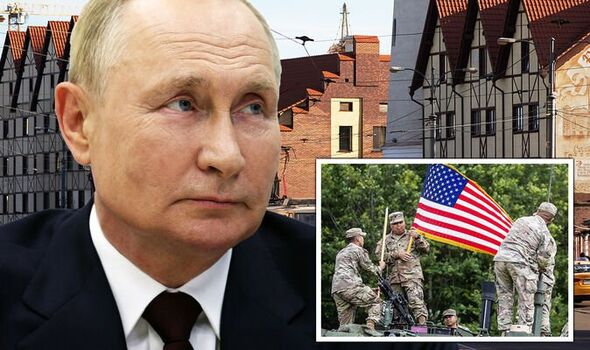
Economically shackled by stringent EU sanctions, geopolitically isolated from their parent state, and facing severe restrictions on freedom of movement, the residents of Russia’s Kaliningrad Oblast are grappling with the domestic fallout of Putin’s war in Ukraine.
Situated behind NATO lines in Eastern Europe, Kaliningrad holds strategic significance for the Kremlin due to its unique geography. Despite being home to just under a million inhabitants, the region’s naval and territorial capabilities make it a notable force, earning it the reputation of the “most heavy-militarised region in Europe” according to the Polish Ministry of Foreign Affairs. As the conflict in Ukraine unfolds, Kaliningrad has transitioned from a minor concern for the West to a potential flashpoint for a larger conflict.
The people of Kaliningrad find themselves stranded as EU member states, including Estonia, Latvia, Lithuania, Poland, and Finland, restrict entry for Russians traveling on Schengen visas, effectively closing Europe to Russian tourists. With no viable options for travel outside mainland Russia, residents face increasing friction when transiting through neighboring Lithuania, while flights between Moscow and Kaliningrad have become longer due to a ban on Russian aircraft in EU airspace.
The geopolitical tensions have made Kaliningrad a potential trigger point for a larger disaster in Europe, raising concerns about the region becoming a flashpoint for conflict. NATO’s eastward expansion has fueled Russia’s aggression in Ukraine, and the Baltic Sea, including Kaliningrad, remains a focal point in the larger geopolitical landscape.
Kaliningrad’s history, carved out of the Kingdom of Prussia after World War II and strategically positioned between NATO and EU members, adds complexity to its current role. As tensions rise, fears of potential escalation in the Suwalki Gap heighten, with concerns that Russia could cut off the Baltic states from NATO reinforcements by occupying the area between Kaliningrad and Belarus.
Russia’s military presence in Kaliningrad, which hosts the Baltic Fleet headquarters, poses a strategic threat to shipping in the Baltic Sea and the land route between NATO and Baltic member states. Upgrades in equipment, including air-defense, cruise, and ballistic missiles, bolster Russia’s military influence in the region. The presence of the 152nd Guards Missile Brigade, equipped with Iskander ballistic missiles capable of delivering nuclear warheads, adds to the region’s significance.
However, the toll of the conflict in Ukraine has depleted personnel numbers in Kaliningrad, with up to 80% of forces being redeployed to the front lines. Concerns about potential unrest among Kaliningrad’s residents arise, particularly with the mobilization of 300,000 reservists and protests against the draft leading to violent clashes.
Sanctions on Russian exports, transit restrictions, and a collapse in the regional economy add to the challenges faced by Kaliningrad. Visa restrictions on Russians and the suspension of the e-visa scheme for foreign nationals further contribute to the region’s isolation, with tourism levels plummeting.
As Kaliningrad navigates the fallout of Putin’s war, the region stands at the crossroads of geopolitical tensions, economic challenges, and the potential for internal unrest, underscoring its significance in the broader geopolitical landscape.
RELATED ARTICLES
- After Fooling the People to Reelect Putin, Russia now announces More Cannon Fodder Mobilizations
- Russia Fires Barrage of North Korean Missiles at Kyiv After US Visit
- Ex-Wagner fighters Join Free Russia Army's Battle to Liberate Russia from Putin Occupation
- Hungary Becomes First EU Country to Congratulate Putin for Winning the 'Elections'
- Putin says NATO Troops are already in Ukraine But Russia is Still Winning











